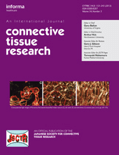
CONNECTIVE TISSUE RESEARCH
Scope & Guideline
Bridging Fundamental Research with Clinical Practice
Introduction
Aims and Scopes
- Connective Tissue Biology and Physiology:
Exploration of the molecular and cellular mechanisms underlying the biology of connective tissues, including the roles of various cell types and extracellular matrix components. - Pathophysiology of Connective Tissue Disorders:
Investigation into the mechanisms of diseases affecting connective tissues, such as osteoarthritis, osteoporosis, and various genetic disorders, aiming to identify potential therapeutic targets. - Regenerative Medicine and Tissue Engineering:
Research on innovative strategies for the regeneration and repair of connective tissues, including the use of stem cells, biomaterials, and growth factors. - Biomechanics of Connective Tissues:
Analysis of the mechanical properties of connective tissues and their implications for injury, repair, and functional outcomes. - Immunology and Inflammation in Connective Tissue Diseases:
Study of the immune responses and inflammatory processes associated with connective tissue disorders, aiming to understand their role in disease progression and treatment. - Translational Research:
Facilitating the application of basic research findings to clinical practice, particularly in the development of new therapies and interventions for connective tissue diseases.
Trending and Emerging
- Integrative Approaches to Regeneration:
An increasing number of studies explore the integration of biomaterials, stem cell therapy, and mechanical stimulation for the regeneration of connective tissues, highlighting a multidisciplinary approach to healing. - Molecular Mechanisms of Osteogenesis and Chondrogenesis:
There is a growing emphasis on understanding the molecular pathways that govern bone and cartilage formation, with research focusing on signaling molecules, transcription factors, and epigenetic modifications. - Role of Extracellular Vesicles in Tissue Repair:
Research on the therapeutic potential of extracellular vesicles derived from stem cells has gained momentum, providing insights into intercellular communication and regenerative mechanisms. - Biomechanical Assessments and Their Clinical Implications:
An emerging trend in the journal is the emphasis on biomechanical evaluations and their relevance to clinical outcomes in connective tissue injuries, fostering a better understanding of tissue mechanics. - Personalized Medicine in Connective Tissue Disorders:
The exploration of personalized therapeutic strategies based on genetic, molecular, and environmental factors is becoming increasingly prominent, reflecting a shift towards tailored treatment approaches.
Declining or Waning
- Traditional Surgical Techniques:
Research emphasizing traditional surgical approaches to connective tissue repair has become less frequent, as newer, less invasive techniques and regenerative therapies gain traction. - In vitro Studies with Limited Clinical Relevance:
There has been a noticeable decrease in studies that rely solely on in vitro models without subsequent validation in vivo, as there is increasing emphasis on translational research that connects laboratory findings to clinical applications. - Focus on Inflammatory Cytokines Alone:
Research solely centered on the role of inflammatory cytokines in connective tissue disorders has waned, with a shift towards a more integrated approach that considers multiple signaling pathways and cellular interactions.
Similar Journals

npj Regenerative Medicine
Pioneering Research for Tomorrow's Therapies.npj Regenerative Medicine, published by NATURE PORTFOLIO, is at the forefront of research and innovation in the field of regenerative medicine, fostering a deep understanding of cellular and molecular processes that can be leveraged for therapeutic advancements. Launched as an Open Access journal since 2016, it ensures wide dissemination of knowledge, allowing researchers, professionals, and students to access high-quality articles without barriers. With an impressive impact, it holds Q1 ratings across multiple categories including Biomedical Engineering, Cell Biology, Developmental Biology, and Medicine (miscellaneous) as of 2023, indicating its critical role in shaping contemporary scientific discourse. The journal ranks notably within the top 10% in multiple Scopus categories, indicating its commitment to publishing pioneering research that addresses pressing challenges in regenerative therapies. Addressing the dynamic convergence of disciplines, npj Regenerative Medicine is poised to not only impact academic thought but also translate into clinical applications, making it a pivotal resource for those invested in the future of medicine.
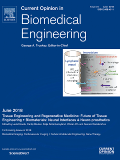
Current Opinion in Biomedical Engineering
Elevating knowledge exchange in biomedical engineering.Current Opinion in Biomedical Engineering is a renowned journal published by Elsevier, focusing on the cutting-edge developments and critical assessments in the fields of biomedical engineering and related disciplines. With an ISSN of 2468-4511, it provides a valuable platform for researchers and professionals to disseminate their insights and discoveries in areas such as bioengineering, biomaterials, and medicine. Its impressive impact factor positions it in the Q2 category for several fields, including Bioengineering and Biomedical Engineering, highlighting its influence and relevance in ongoing scientific dialogues. The journal’s unique format of opinion pieces and reviews encourages innovative thinking and fosters collaboration among experts. As an essential resource for those engaged in the life sciences and engineering, Current Opinion in Biomedical Engineering serves to stimulate discussion, promote knowledge exchange, and drive advancements in biomedical applications. Set in the Netherlands at Radarweg 29, 1043 NX Amsterdam, the journal is accessible through various academic platforms, enabling a global readership to engage with the latest scholarly work in this dynamic field.
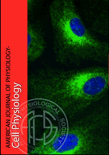
AMERICAN JOURNAL OF PHYSIOLOGY-CELL PHYSIOLOGY
Fostering Innovation in the Heart of Cellular Science.Welcome to the American Journal of Physiology-Cell Physiology, a premier publication produced by the American Physiological Society that has been a cornerstone of research in cell biology and physiology since its inception in 1977. With its esteemed reputation solidified by its Q1 ranking in both Cell Biology and Physiology categories as of 2023, this journal serves as a vital resource for researchers, professionals, and students pursuing cutting-edge discoveries in cellular mechanisms. The journal is published in the United States and is recognized for its rigorous peer-review process, contributing to its high impact factor and prestigious standing—ranking #32 out of 193 in Physiology and #75 out of 285 in Cell Biology according to Scopus. While the journal does not provide open access, it remains an essential repository of knowledge, fostering innovation and advancing the field with original research articles, reviews, and commentaries. Join us in exploring the molecular intricacies of life through the compelling research that the American Journal of Physiology-Cell Physiology has to offer.
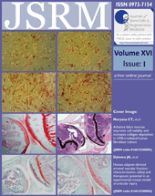
Journal of Stem Cells & Regenerative Medicine
Transforming Science into HealingThe Journal of Stem Cells & Regenerative Medicine is a leading publication dedicated to the advancing field of stem cell research and regenerative medicine. Established in India and published by JOURNAL STEM CELLS & REGENERATIVE MEDICINE, this Open Access journal has been available since 2007, providing researchers and practitioners with free and unrestricted access to high-quality articles. With an ISSN of 0973-7154, the journal is indexed in Scopus, featuring a wide array of topics and insights into biochemistry, biotechnology, cell biology, and molecular biology, as denoted by its relevant quartile rankings. This journal is committed to bridging the gap between laboratory research and clinical applications, making significant contributions to the scientific community. The convergence of innovative studies from 2010 to 2024 positions it as an invaluable resource for those looking to stay at the forefront of stem cell and regenerative medicine research.

CELL AND TISSUE BANKING
Connecting research and practice in cell and tissue banking.CELL AND TISSUE BANKING, published by Springer, is a prominent journal dedicated to advancing the fields of biomaterials, biomedical engineering, cell biology, and transplantation. With its ISSN 1389-9333 and E-ISSN 1573-6814, the journal plays a crucial role in disseminating high-quality research from its inception in 2000 to its ongoing contributions through 2024. Situated in the Netherlands, it boasts a respectable 2023 impact factor with notable quartile rankings, positioning it within the Q3 category for biomaterials, biomedical engineering, and transplantation, and Q4 for cell biology. Furthermore, its Scopus rankings underscore its relevance and influence, particularly in the fields of medicine and engineering. Although it does not currently offer open access options, the journal remains a vital resource for researchers, professionals, and students alike, fostering innovation and knowledge transfer in the critical areas of cell and tissue sustainability.

Journal of Hard Tissue Biology
Fostering Knowledge in Biochemistry and BiomaterialsJournal of Hard Tissue Biology, published by JOURNAL HARD TISSUE BIOLOGY, is a pivotal resource for researchers and practitioners engaged in the multifaceted fields of biochemistry, biomaterials, cell biology, dentistry, and orthopedics. With an ISSN of 1341-7649 and a publication history spanning from 2003 to 2024, this journal aims to disseminate innovative findings and review articles that contribute to the understanding of hard tissue structures and their applications in medicine. Despite its current Q4 ranking across several categories, including Biochemistry and Oral Medicine, the journal serves as a critical platform for emerging research, appealing to those dedicated to advancing the science of hard tissues. While it operates under a subscription model, the articles published here are essential for anyone seeking comprehensive insights into the biological, mechanical, and clinical aspects of hard tissues. The journal's commitment to excellence and its ongoing contributions make it an indispensable tool for students, researchers, and professionals aiming to enhance their understanding of hard tissue biology.
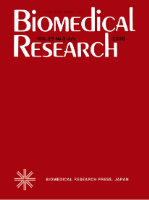
BIOMEDICAL RESEARCH-TOKYO
Unveiling Breakthroughs in Biochemistry and MedicineBIOMEDICAL RESEARCH-TOKYO is an esteemed interdisciplinary journal published by BIOMEDICAL RESEARCH PRESS LTD, dedicated to disseminating pioneering research and advancements in the fields of biochemistry, genetics, and medicine. Since its inception in 1980, the journal has established itself as a reputable source of knowledge, contributing significantly to the global scientific community with its strong emphasis on innovative findings and methodologies. With a consistent presence in the Q3 quartile for both Biochemistry, Genetics and Molecular Biology and Medicine categories as of 2023, it continues to attract a diverse range of research articles. While the journal does not operate as an open access platform, it remains an essential resource for researchers, professionals, and students seeking to further their understanding of biomedical sciences. Located in Sapporo, Japan, this journal fosters collaboration and knowledge sharing among the international biomedical research community, engaging readers through its compelling studies that span from 1980 to 2024.
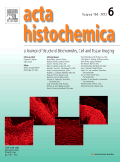
ACTA HISTOCHEMICA
Illuminating Cell Structures Through Rigorous Histochemical StudyACTA HISTOCHEMICA, a prestigious journal published by Elsevier GmbH, is dedicated to advancing the field of histochemistry and its applications within cell biology and medicine. With an ISSN of 0065-1281 and an E-ISSN of 1618-0372, the journal provides a critical platform for the dissemination of high-quality research findings and reviews, integral for both emerging and established scholars. Since its inception in 1954 and continuing through to 2024, ACTA HISTOCHEMICA has maintained a strong commitment to publishing significant advancements in histology and cell biology, as evidenced by its categorization in Q3 for Cell Biology and Histology, as well as Q2 in miscellaneous medicine for the year 2023. The journal ranks favorably in Scopus, holding the 27th rank in Histology and a 200th rank in Cell Biology, highlighting its importance to the academic community. With its headquarters in Munich, Germany, ACTA HISTOCHEMICA continues to attract contributions from global researchers, fostering an international dialogue essential for the growth of knowledge in histochemistry and related disciplines.
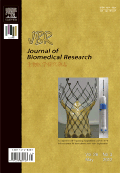
Journal of Biomedical Research
Uncovering Breakthroughs in Health and DiseaseJournal of Biomedical Research, published by Nanjing Medical University in China, is a prominent platform for groundbreaking discoveries in the fields of Biochemistry, Genetics, and Molecular Biology, as well as Medicine. With an ISSN of 1674-8301 and an E-ISSN of 1876-4819, the journal offers a vital opportunity for researchers, professionals, and students to disseminate insightful research findings. Although not currently available as an open access journal, its inclusion in the second quartile of both Biochemistry and Medicine categories underscores its growing influence and commitment to high-quality scholarship, as evidenced by its historical compliance with Scopus rankings prior to 2009. By fostering an interdisciplinary approach, the Journal of Biomedical Research aims to bridge gaps in current biomedical understanding and encourages innovative research that can lead to significant contributions in improving health outcomes. Its editorial policies guarantee rigorous peer review, making it a trusted source of knowledge in the biomedical community.
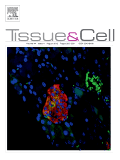
TISSUE & CELL
Unveiling the Mysteries of Cells and TissuesTISSUE & CELL is a prominent academic journal, published by CHURCHILL LIVINGSTONE, that has been at the forefront of research in the fields of cell biology, developmental biology, and miscellaneous areas of medicine since its inception in 1969. With a strong focus on high-quality research, TISSUE & CELL has established itself within the academic community, holding a Q3 ranking in both Cell Biology and Developmental Biology, and a Q2 ranking in Medicine as of 2023. The journal aims to disseminate significant findings that contribute to the understanding of tissue structure and function, helping to bridge the gap between basic biological research and clinical applications. While it operates on a subscription basis and does not currently offer Open Access options, the journal remains a vital resource for researchers, professionals, and students interested in cutting-edge developments in the biological sciences. The journal's address is located in the scenic city of Edinburgh, further establishing its academic heritage in the United Kingdom.